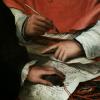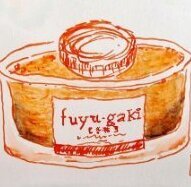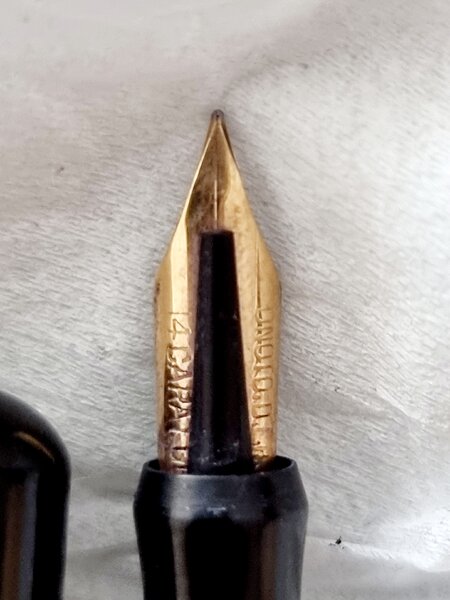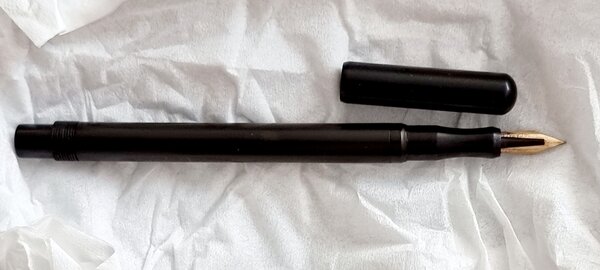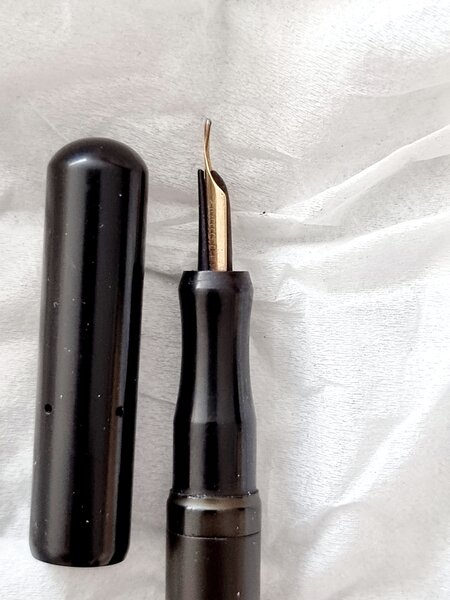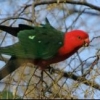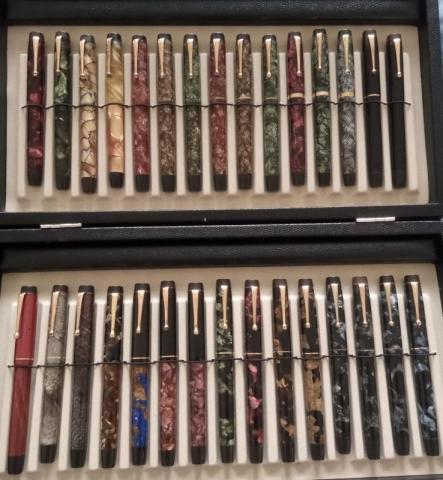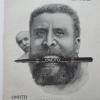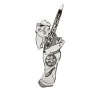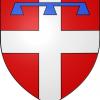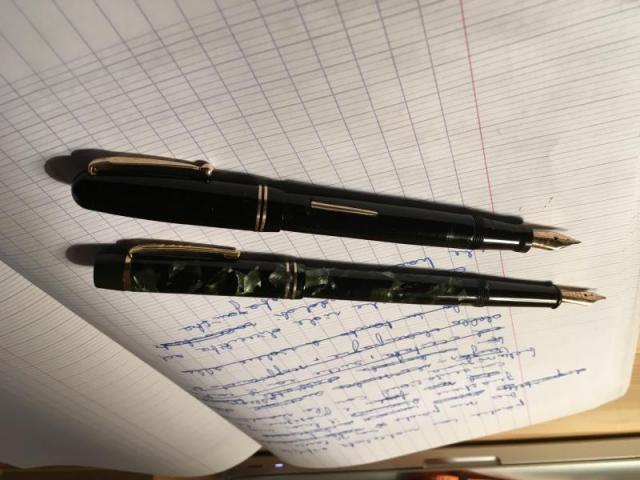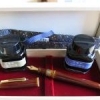Search the Community
Showing results for tags 'onoto'.
-

Review of the ONOTO Magna Rosso w/ 18K broad nib
donnweinberg posted a topic in Great Britain & Ireland - Europe
This is my review of a new, currently produced Onoto Magna Classic Rosso fountain pen, with a broad 18K nib. First, some photos of what I'm talking about. (1) Onoto gives you a choice of box for your new pen, either a "high gloss lacquered presentation box" or a "leather pen roll with a leatherette box." I chose the former, which is pictured here: The lacquered box is quite attractive and solid and comes in the cardboard box. When one unwraps everything and opens the wood box, here is what you get (I don't show the polishing cloth, but one comes inside a glossy cardboard holder): The blue "Onoto" ribbon actually is on the outside of the black cardboard box's paper wrapping, so the effect is that of a fancy gift. Next, here are photos of the pen itself: I ordered this pen with only two extra-cost options; I got the 18K nib (in broad width), which cost $209.16, and the "extra weight" option (shown in the photo looking into the barrel; the brass insert), which cost $20.92. Other options available are: (a) nib modification to stub, italic, or other ($87) ; (b) customized engraving ($40.67) ; (c) an additional rollerball conversion kit ($87.15) ; or (d) a plunger-fill converter ($290.50), which you can't get with the extra weight option (that special converter won't fit). The base price of the pen with a bi-color steel nib in either F, M, or B is $463.63. These costs reflect the exchange rate between Pound and Dollar at the time of the order in January. According to the Onoto website page for this pen, the following are the important measurements: Length capped: 127mm = 5.0" Length posted, including nib: 166mm = 6.535" Length of cap: 67mm = 2.638" Barrel Diameter range: 11 - 13.2mm = 0.433" - 0.52" Cap Diameter range: 14 - 15.8mm = 0.55" - 0.622" Weight: 25g (standard) or 32g (with extra weight option) Cap Weight alone: 13g The cost of shipping from the U.K. to Baltimore was approximately $25 (19.99 pounds), using today's exchange rate. So, this is an expensive pen, and many of you justifiably will want to compare it's value with that of it closest competitors. I'll leave that exercise to you all. In the meantime, here are my relatively early impressions of this pen: The 18K broad nib is two-toned. It writes with a medium-to-broad stroke and is on the firmer side, but is by no means a "nail." In fact, it writes with a silky smoothness, gliding across nice paper in a satisfying way. Depending on how you write, but considering how I write, there was some subtle shading in the various strokes of the pen. I provide a writing sample a bit lower here. The cap takes about 4-5 turns to remove and relocate on the barrel. For some, that is too many turns, and I'm inclined to agree, but for me this issue is minor. The cap can be posted quite easily and sits securely on the end of the barrel. I don't generally post my caps, and on this pen I see no reason to with this pen. As this pen has the extra weight option in which a brass (or other metal) cylinder is inserted into the barrel, this pen could not be purchased with the plunger-filler converter option. I purchased the pen with the standard twist converter, as shown. I filled the pen in the typical manner, and it wrote immediately and smoothly. I have been writing with it every day for 3 weeks, and I have not had any hard starts or skips. The pen writes beautifully. The resin body and cap feel warm and solid. The color is a bright red and is quite beautiful to my eyes. The ink being used in this pen is Private Reserve Black Cherry. Here is a writing sample: I am happy that I purchased this pen. I welcome any comments or questions you may have about it. -
I I thought to open a thread on ONOTO PENS. Just show your Onoto pens and perhaps some writing samples to inspire us and what is your thought when you found this classic rare pen. I have several pens and I am going to post my writing experience with these amazing pens ,soon later. The pens are on the left hand side of this image is my Vintage collection
-
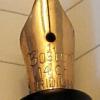
De La Rue / Onoto Identification Help Requested
TheDutchGuy posted a topic in Great Britain & Ireland - Europe
This is the catch from yesterday's pen show in Tilburg, NL. I'm not knowledgeable about vintage pens, so some help would be welcome. Ignoring the Sheaffer PFM for the moment, I found what is supposed to be a ca. 1938 Onoto 5601 in green marble with a 14k #3 Standard nib. Very nice pen, writes extremely well. I put J. Herbin Lierre Sauvage in it - great match! The other pen, which was bought by my son, is a very, very beautiful De La Rue / Onoto lever filler in brown-flaked marble. Exact model and year of manufacture as yet unknown. Any corrections and additional info are welcome! Thanks! -
As I never seem to have much luck on the repair board, hopefully I can find an Onoto-experienced eye here. Snagged a small group of pens from a "If it's in a Parker box it's a Parker" seller, but instead of a Platignum or whathaveyou in the box, somewhat to my trepidation find myself the owner of a De La Rue "Onoto the Pen" with the model number 3050 imprinted on the blind cap. Well I never expected one of these to swim into my ken, so I've perforce been taking a crash course in these pens and established what I need to do to, hopefully, get it working. Despite a copy of Pen Repair, various threads and articles, I have a couple of queries I hope someone could help me with. Viz: a. The plunger rod is not entirely straight; it's not wildly bent, but it is slightly off. Is this going to be a problem? b. Despite Custom Pen Parts efforts, I'm not absolutely sure what this pen counts as in their identification table. Tend to assume "Standard", but the barrel length is a bit off, however I don't know how variable those can be. I've tried to find information on understanding Onoto model numbers and approach it from that angle, but no dice. Which size washer does this 3050 need? Any other tips, pointers, information on this pen, all very gratefully received. Thank you muchly. I wouldn't say I'm out of my depth here, but I'm having to paddle pretty vigorously! Cheers, Al
-
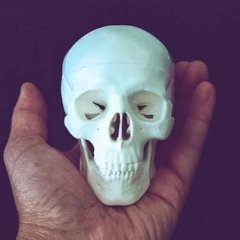
Advice on vintage Onoto nib sizes and interchangeability?
velox brunneis vulpes posted a topic in Great Britain & Ireland - Europe
Dear fellow FPNers, I have recently acquired 2 vintage Onoto plunger fillers, a model 3000 with a No.3/ST nib, and a model 6000 with a No.3 nib. Could someone please let me know if the nibs And what does the "ST" on the No 3/ST stand are interchangeable? for? I look forward to your feedback Thanks in advance! -

Advice on vintage Onoto nib sizes and interchangeability?
velox brunneis vulpes posted a topic in Of Nibs & Tines
Dear fellow FPNers, I have recently acquired 2 vintage Onoto plunger fillers, a model 3000 with a No.3/ST nib, and a model 6000 with a No.3 nib. Could someone please let me know if the nibs And what does the "ST" on the No 3/ST stand are interchangeable? for? I look forward to your feedback Thanks in advance!-
- onoto
- vintage pen
-
(and 2 more)
Tagged with:
-

Advice on vintage Onoto nib sizes and interchangeability?
velox brunneis vulpes posted a topic in Fountain & Dip Pens - First Stop
Dear fellow FPNers, I have recently acquired 2 vintage Onoto plunger fillers, a model 3000 with a No.3/ST nib, and a model 6000 with a No.3 nib. Could someone please let me know if the nibs are interchangeable? And what does the "ST" on the No 3/ST stand for? I look forward to your feedback Thanks in advance! Best, J-
- onoto
- onoto de la rue
-
(and 4 more)
Tagged with:
-
From the album: OldTravelingShoe's Random Pics of European Fountain Pens
© (c) 2022 by OldTravelingShoe
- 0 B
- x
-
From the album: OldTravelingShoe's Random Pics of European Fountain Pens
© (c) 2022 by OldTravelingShoe
- 0 B
- x
-
From the album: OldTravelingShoe's Random Pics of European Fountain Pens
© (c) 2022 by OldTravelingShoe
- 0 B
- x
-
I have been given an Onoto piston filler which I have managed to coax back into life. mostly blocked with a crust of dried ink. Water soluble fortunately. I was wondering if anyone can help me identify and possibly date it as I would love to know more about it. I have added pictures of all the identifying marks I can see.
-
I found here one review of an Onoto K series pen. It is excellent, worth reading as a companion because I do not plan to repeat most of that information. This is more of a comparison and notes on the pens. However, I will recap the series briefly. In 1955, just three years before they gave the pen game away entirely, Onoto released a series in a new style for them, being fairly plain plastics, piston fillers, mainly with hooded nibs, and barrels in the vogue cigar style. They proved to be good pens but, too little, too late as the British were wont to say. The pens were: K1 - Gold clutch cap, ink window, hooded nibK2 - Same as the K1 except with body coloured capK4 - Same as the K2 except the cap was screw rather than clutchK3 - The odd one. It is slimmer (by about 1 mm), slightly shorter in barrel and cap with flattened ends to both, an open No 3 nib, no ink window, and the piston mechanism is able to be serviced, unlike the other three. In remaining respects it was somewhat like the K2 with body coloured clutch cap.Onoto's marketing of the time profiled the pens like this: The K3 and K4 were the same price despite their obvious differences, with the K4 described as a basic pen and the K3 as a conventional pen. The K1 stepped up the price 7% for its gold cap.The most expensive was the K2, up another 12% in price, distinguished as having "extra iridium". So, the numbering follows no price or feature pattern, and the K3 remains quite an oddball among them when you get to the detail. In the following photo I have placed an Aurora 88 and Lamy 2000 for comparison, being similar hooded piston fillers of the era and shortly after. From left to right, Aurora 88, K1, K3, K4, K4, Lamy 2000. Note also clip differences in the K1, K3 and K4. I have not purchased a K2 because its features all exist elsewhere in the K models. Buying a second K4 was somewhat accidental. The Lamy looks huge next to the others, the Aurora (an original 88 with Nikargenta cap) quite comparable if slightly bigger over all. I speculate that the Aurora 88 may have been Onoto's principal model for their pen. Here are the pens with nibs exposed. From left to right, K1, Lamy 2000, K3, Aurora 88, K4 underside of nib, K4 with shroud removed. Note slimness of the K3's section compared with the others. The K3 has a conventional section which unscrews to reveal the barrel internals and piston. The other three pens have a friction fit section which is concealed under a screw-on plastic shroud. Note that after removing the shroud on the K1 on the left, I have not quite re-aligned it correctly. In this case I can screw the shroud a shade tighter. If you have removed the section (you can grease the piston, needed maybe once if ever, but you can not remove or replace it) then unless you have marked carefully you will be up for some repeated un- and re- screwing of the shroud while you rotate the section fractionally until the tightened shroud lines up with the nib. A touch of silicone grease on the friction fit is useful simply to make that a little easier. The K1 nib and feed I own do not appear to be set correctly, or else the K1 is different in one respect. On removing the shroud I can read the nib down to where it says K1 on it, below "De La Rue // 14 ct // Onoto". This part of the nib is inset further on the K4 pens so I can not read below 14 ct. I have not thought finding out a sufficient reason to pull the nib. The K3 sports a standard Onoto No 3 nib, saying "Onoto // 14ct // 3" as usual. I have inked two of these pens and dipped the other two. Pelikan 4001 Königsblau was used in both of the filled pens, for comparison. I dipped the other two in my Random Mix Bottle as an afterthought. Both of the K4 models display a heavier line but the inked grey K4 needs a little tine adjustment (closure), I think. Note the railroading in the closing bracket of "grey". At first that happened to the "i" in Pelikan as well, but enough ink was laid that it soon filled the gap with bleed in the paper. Used after dipping, the maroon K4 seems better behaved. The K1, dipped only and unadjusted at all so far, also looks a bit dodgy with bleeding. Hands-down winner here for me is the K3, the No 3 nib gliding softly to produce a beautiful line, as these nibs usually do. I do not normally post pens, including these Onotos, although to be fair they look elegantly longer if you do. You might gather the K3 is my favourite although I think I will get good service from the others with a little nib work, which is not unexpected in a 60 year old pen. Comparing the Aurora 88, and Lamy 2000, the lack of an ink window is a deficiency of the K3, and I am not keen on the heavy hooding of the other K models. I prefer to see the nib at least a bit, if only not to have to think about rotation alignment of the pen at the first stroke of writing. Writing, none of these nibs (all 14 ct) could be called soft so far as the metal goes. The Lamy is well known to people, a smooth nail. Closest comparison would be with the K1 and K4 Onotos. The Aurora 88 has its characteristic slight toothiness and little in the way of softness either, really, so my narrow writing winner is the K3 even though that too is not a soft nib. This is purely a personal preference. Subject to a little work on two of them, I think all of these will be found to be excellent. The Onoto K-series pens are good buys in that they are simple, robust, light, discreetly elegant and capable of writing very well. The fact you can not service the piston seal other than on the K3 does not seem to have been a problem anywhere to date. Like the two comparison pens, A88 and L2K, they will serve as workhorse pens that no-one should be afraid to take anywhere. They are also inexpensive. Oh, and my favourite colour is the maroon. They also come in black. eta: a couple of extra notes
-
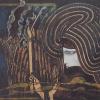
Shackleton's Onotos - with "patent self filling pen" imprints in 1921?
KLscribbler posted a topic in Great Britain & Ireland - Europe
Recently, I came upon some photos of Onotos formerly owned by Ernest Shackleton. It seems they have not been shared on FPN before, so here they are: The first one is from a Christie's auction in 2012 (picture can be magnified by clicking on it) : https://www.christies.com/en/lot/lot-5605380 The second one, which looks so similar to the one above that it may be the same pen, is pictured in an online exhibit made by the Osher Map Library of the University of Southern Maine. Scroll down to item no. 67 on this page and you'll see it (picture can be magnified by clicking it) : https://oshermaps.org/exhibitions/to-the-ends-of-the-earth/section-7 If the pens above are one and the same, I wonder if it is currently in the collection of the Osher Library. (Any FPN folks work there, perchance?) In any case, here is a third one, obviously not the same pen as the above, with much more barrel wear but less discolouration. This photo is from an earlier Christie's auction in 2001. Unfortunately, the photo of this pen is lower resolution than those above. Moreover, the imprint is worn down and quite hard to read on this one: https://www.christies.com/en/lot/lot-2778060 All of the pens are engraved on a barrel band with Shackleton's initials and the year 1921. It seems he must have obtained them shortly before embarking on his final expedition; perhaps he even carried them aboard the Quest. Now, both (or all three?) of them are typical 1920s hard rubber Onotos in most respects - the shapes of the sections, caps, and plunger knobs; the chasing pattern; the absence of an over-under feed. But interestingly, they all bear this style of imprint: "ONOTO" PATENT SELF FILLING PEN DE LA RUE, LONDON The imprint on the last pen is so worn that I can't tell for sure that it isn't the "Onoto THE Pen" type of imprint instead, but based on what I can see, and word placement etc., it seems reasonable to say that it was most likely the same "patent self filling pen" imprint. I've always assumed the "patent self filling" imprint was early; certainly by 1921 I would have expected to see "Onoto THE Pen" imprints, especially on pens with the newer design of section/cap/filler knob. Clearly my assumption was wrong. That said, I don't have Steve Hull's Onoto book, so I don't know what the best of current knowledge is regarding when the imprint change happened. (Does the book say anything about when the redesigns and imprint changes happened for N and O model Onotos?) In any case, these are pens that accompanied the great explorer in his last adventures. It is heartening to see them preserved till the present day in such a fine condition.-
- onoto
- shackleton
-
(and 4 more)
Tagged with:
-

British 1930's & 1940's Button Filler Pens.
Ricky2011 posted a topic in Great Britain & Ireland - Europe
Hi, just thought id share my selection of Stephens (1932) & Parker victory (1935-46) English made (discounting the first 5 years made in canada). when you look at the the period in general a lot of the the other makers were concentrating on lever fillers. would be nice to see what else is made during the period in button filler. regards Rick- 37 replies
-
- parkerstephens
- wyvern
-
(and 4 more)
Tagged with:
-
Hi Guys and Gals. I wonder if any of you can help in providing some information of this pen? The pen was shown to me recently by a retired Gentleman, who is a volunteer engineer at the local aircraft museum, in Newark on Trent. He has had this for a lot of years, residing in the back of a drawer, previously owned by another family member. The conversation pretty much came about by accident, as we usually talk about his fixing of vintage aircraft, but for some reason, I had just mentioned that I owned a few pens! I digress. On my next visit (which was last week), he had brought the pen in to show me, stuffed in his work overalls pocket… I had a look, and it is some sort of Onoto, with a number 3 nib. The body looks and feels like an acrylic material, but could be anything (not an expert in any way shape or form) with a well worn silver overlay. The filling mechanism seem jammed solid, the plunger was pulled gently until it stopped, which was not very far. No forcing, just moved so I could take a picture. I have looked over the internet, and multiple pages on FPN, but not managed to ID the pen, or get any ballpark date on it. I have no idea if it is valuable, or just worth a few pennies, but have advised that he takes it out of his coveralls and keeps it in some safer place for now! Many Thanks!
- 2 replies
-
- onoto
- number three
-
(and 1 more)
Tagged with:
-
I have just bought two onotos, one is a 6234 plunger, and another is a very early BCHR pen. The BCHR is in great condition, except for the cap having a small lip crack (its a slip cap by the way) Im wondering how I can fix this? I am not sending the pen overseas to a repair man as Im confident I can do the repair, I just don't know how. Or if it cant be repaired Id buy a cap off of someone. Here's some pics. thank you.
-
Dear Onoto Guru's, I have a metal Onoto that needs service, but the plunger is frozen (see photo, that's all that will move). But since it has a metal Shank (plunger knob) I do not know if there is a shank retaining pin. I have repaired a few Onoto's; remove shank pin, replace cork seal, replace plunger washer but with no shank retaining pin how does one disassemble this metal pen? If any one know's how to disassemble a vintage metal body Onoto plunger pen, please let me know. Thanks.
-
The top one is an Onoto 6233. Certainly a beauty, very nice and balanced to hold and to write with. I got it from an auction along with a bunch of other interesting pens and it proved a nightmare to repair, certainly due to some extent to my lack of experience, but also to the trickiness of the plunger filling system. It took me no less than four orders from Custom Pen Parts to get it to fill properly. Now, the nib is certainly very nice and soft, though not a flex one. The ink flow seems to be as much of a nightmare as the filling system. Most of the time the ink flow is stingy, with Diamine China Blue. However, at times, it reminds me of a dip pen when just taken out of an ink well, as I remember from when I learnt to write, back in the fifties. It just keeps dripping. I know that before starting to write with a plunger filler you have to unscrew half a turn the blind knob, in order to open the flow valve. However this doesn't seem to have any immediate effect. If the nib is dry, no opening of the valve will bring the ink down unless you shake the pen several times and nicely sprinkle whatever you've got around you. Conversely, once the ink starts overflowing, no locking of the valve will stop it for a while. So that's my experience with an Onoto. The pen below in the picture is a Swan 3260, which I bought on Ebay. It's not particularly beautiful, in fact, rather plain looking. It is a lever filler, which I cleaned, resaked and got to write with no problems. The nib is semi-flex and writing with it is a lovely experience. The pen is absolutely no-nonsense: it does what it is meant for and does it flawlessly. I bought another one on Ebay, shortly after, a 6260. The nib writes too fine for my writing, but I love to use it for drawing. As a bottom line: I wish I could write with my beautiful Onoto, but always fall back on my Swan.
-
Hi, I was lucky enough to find a 1930's Onoto Magna which has been restored to working condition. The downside is that the fitted De la Rue No. 7 nib is a fine one with no flex and I don't find it very satisfying to write with. I'd like to know if there are replacement No.7 nibs available or alternatives used with magnas of this era. Thanks
-
No 'Topic Poll" button appeared when I started this topic. Perhaps it is excluded in this sub-forum. We shall have to do it by hand. I see irregular mention of Onotos on the forums, from people scattered across continents. It is evident from some of the replies that there are some with significant experience of them, probably with current or past collections. So, I am curious to discover more. How many Onotos do you own? Is the number static, rising or falling? Any particular focus on them or comments? For my part they currently stand as the modal point of my collection, albeit not by much. Aurora and Waterman are close behind. I started on them early, and still pick them up occasionally, preferring those needing some repair these days because I find that entertaining. Had I been able to start the poll, my divisions were going to be something like: A. 1 B. 2 C. 3-5 D. 6-9 E. 10-15 F. 16-24 G. 25-40 H. 41+ I fall in the sixth of those categories, F, with 21 currently if I include one on its way. Not all of those are currently functional, but they will be.
-
Here is a brief overview of the pen, with a link to the full review at the end of this post. Appearance and Design: 9 While this model (the Chuzzelwit being based on the Magna Classic) is under a decade old, appearance wise there is something very classically British about the pens. The core model unashamedly harks back to a time of old and is still hand made. The odd sized nib helps give an illusion that this pen is smaller than it really is, as if it were the same pen Winston Churchill apparently asked his wife to obtain after he lost his in the Number 10 bunker. http://i.imgur.com/dQKgUaU.jpg Construction and Quality: 9.5 The score is based upon my original Magna Classic, as the Chuzzelwit was a prototype bought as such at the 2018 London Writing Equipment Show. The only problem with the latter is the clip is too stiff and had to be prized slightly away from the body. The pens are hand made and the execution is superb. Everything fits together extremely well. The clip has spring and is easy to use and the pen feels secure when in a pocket. If there were to be one gripe it would be that it takes roughly 3.5 turns to remove the cap, though this is down to the use of a single thread allowing the branding to line up nicely with the clip. http://i.imgur.com/qCrcHiV.jpg http://i.imgur.com/XsmVKUI.jpg Weight and Dimensions: 10 The pen is light and appears smaller than it really is, but I found this made it incredibly comfortable to hold and use. The threads are thin and cannot be noticed unless you rub your finger up and down against them. The smooth tapering also makes it very easy to find a comfortable position by which to hold the pen, it does not force you in to a specific position. If you do want a heavier pen then there is a cost option (£30 ?) to have an additional weight added in to the barrel. Nib and Performance: 9 As of late 2018 Onoto are changing their supplier from Bock to Jowo. The gold nib on my Magna Classic is the former. With the Chuzzelwit I had an option of a fine Bock or a medium Jowo, trying both at the pen show the latter was far nicer and so was the one I went with. The size is #7 and the appearance is the same for the nibs of both manufacturers (steel). The gold nib in the Magna Classic is fine. It is a very nice writer, smooth and wet, though on the stiffer side. Despite preferring softer, bouncier nibs I actually rather enjoy the experience of using this pen. On the Chuzzelwit, the steel nib is also very nice and is possibly nicer than the gold one, which is something to bare in mind as Onoto pens, despite the costs, come with steel nibs as standard, the gold ones are an additional cost option. http://i.imgur.com/s5qWEYV.jpg http://i.imgur.com/8geWS0l.jpg Filling System and Maintenance: 8 There's not too much to say here. The pens both came with unbranded standard international pattern convertors already installed and no cartridges. The convertors are firmly in place and fit well. I'm not one of the 'if it costs more than a couple of hundred quid it must have a piston' brigade, so I have no problems here. As a result the pen is easy to clean. Also the nib is in a unit that screws in and out. http://i.imgur.com/7Q1eCGH.jpg Cost and Value: 8 (9.5 for the Chuzzelwit as it is a prototype) This is a difficult ones. Onoto pens are not cheap, starting at just under £400 and going in to the multi-thousand. Additionally they come as stock with steel nibs, the gold option costing £120-140 extra, however at the same time they are hand made in traditional ways and with great care. The nibs are hand tuned, and also there is a life time guarantee on the pens (though I do not know if this is transferable). Conclusion: 9 I was nervous when I bought the Magna Classic, but enjoyed using it so much that I actually went to the 2018 London Writing Equipment Show with the intention of buying another of their pens if I could get a decent price. The prototypes have risk, but for me was ultimately worth it. As ever I advise people to try before buying, especially with the cost of these pens and their rarity on the second hand marker - something of a good sign as it shows people consider them keepers. My full write up can be found at: https://dapprman.wordpress.com/2018/12/08/onoto-magna-classic-and-chuzzelwick/ (edit next day to correct spelling from Chuzzelwick to Chuzzelwit)
- 11 replies
-
- onoto
- magna classic
-
(and 3 more)
Tagged with:
-
Hi folks, I'm afraid I rather lost track of all the news concerning Onoto, but thought that you might be interested to know that the website is currently alive and kicking, and I was able to order a Magna just the other day. Does this make it a zombie-zombie-pen-company? Sorry if this has already been discussed to death!!! R.
-
Some context for the adventure here. The question comes in the last paragraph. I bought a long model Onoto 6234 from Spain recently, expecting it would need some service work. The pen looked to be in very fine shape externally, so that was promising. The plunger was extremely difficult to push down. Before taking it further apart, I removed the section to add some silicone grease to the barrel, as an experiment. Now the plunger moved very easily, but with no suitable 'pop' of vacuum breaking. Removing the rod showed that the "cup washer" was made from two bits of what appears to be bicycle inner tube (it curves floppily on one radius) hand cut with a knife into a random polygon roughly approximating a circle, with no cone washer for support. OK, I can replace that. A lack of ink in the barrel or section suggested the earlier repairer had found their effort was not entirely successful. I noted also that the plunger cone pin had rust around it! Pushing it out, I found that my predecessor had resorted to a bit of metal for the pin, and not a rust-proof bit, for this pin immersed in dyed water. Also, the rod was bent, presumably from trying to force down the ungreased piston. Well, it is ebonite with a wire core. I am trying to ease its bend at the moment. It may need replacement. Next, I turned to the cork seal at the top of the barrel. Hmm, no seal screw. That does not help. So, to the question: Does anyone know the threading used for the seal screw on top of an Onoto barrel? Given they used 5BA for the rod, I am conjecturing it will be 0BA or 1BA (but normal RH thread). If it is, I may be able to make another.
-
Admitting I have not read Steve Hull's excellent book cover to cover, I am a little mystified by an Onoto pen I have just acquired. It has an 18ct nib. No other vintage Onoto of which I am aware has other than a 14ct nib. The pen itself is one in the Streamline style. I will identify it properly later. The mottled red hard rubber barrel is labelled "Onoto The Pen" under which is, less clearly but present, "De La Rue & Co London", so that part is all correct. The nib has a heart breather hole characteristic of the brand and era, but whereas my nearest comparable pen has on the nib "DeLaRue // Onoto // London // 3" (most others insert "14c" between Onoto and London) this one has "DeLaRue // London // Onoto // 18ct" Has anyone encountered an 18ct nib on a vintage Onoto before? I can not say how it writes because the plunger washer is fossilised, jamming the plunger. In other respects it seems intact, although the slip cap is either a ring-in or again very unusual, having slight knurling around the top edge but otherwise apparently normal in appearance and matching the pen for colour and pattern.
- 5 replies
-
- onoto
- streamline
-
(and 2 more)
Tagged with:
-
This Onoto, which according to Steve Hull (p253 in his Onoto book) was made about 1949, works on the same principle as all the old Onoto plunger fillers, but it's rather different inside. Note the thin steel rod - that rusted at the end and destroyed the BHR fitting - the one in the picture is my experimental replacement. : And the nib curiously is stamped 99! Since the rod is only about 2mm in diameter, the available corks are too big (normal rod is 3.2mm) so in the end I made a new rod from brass (middle one) It now works nicely and can easily be re-corked if necessary. Cob












